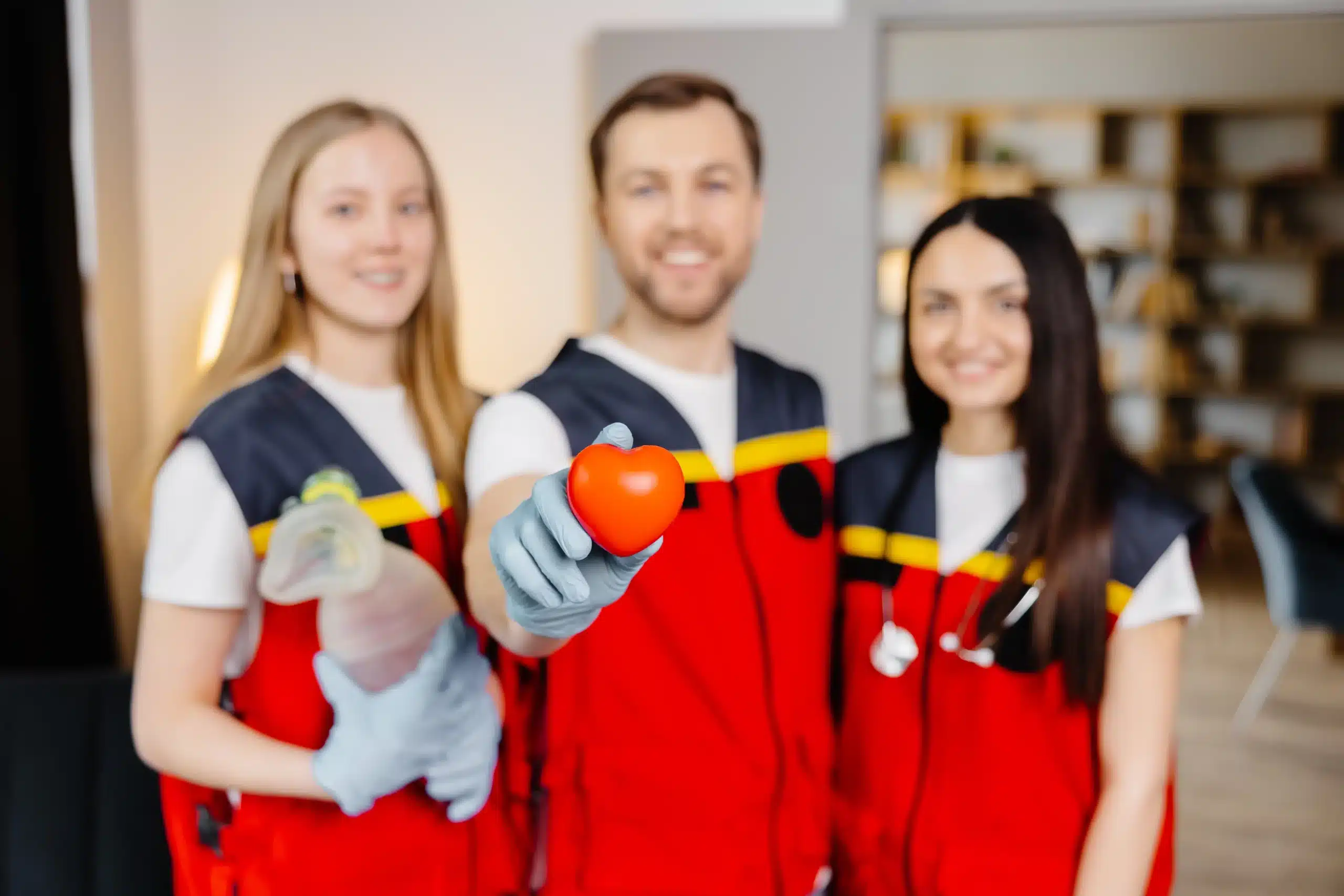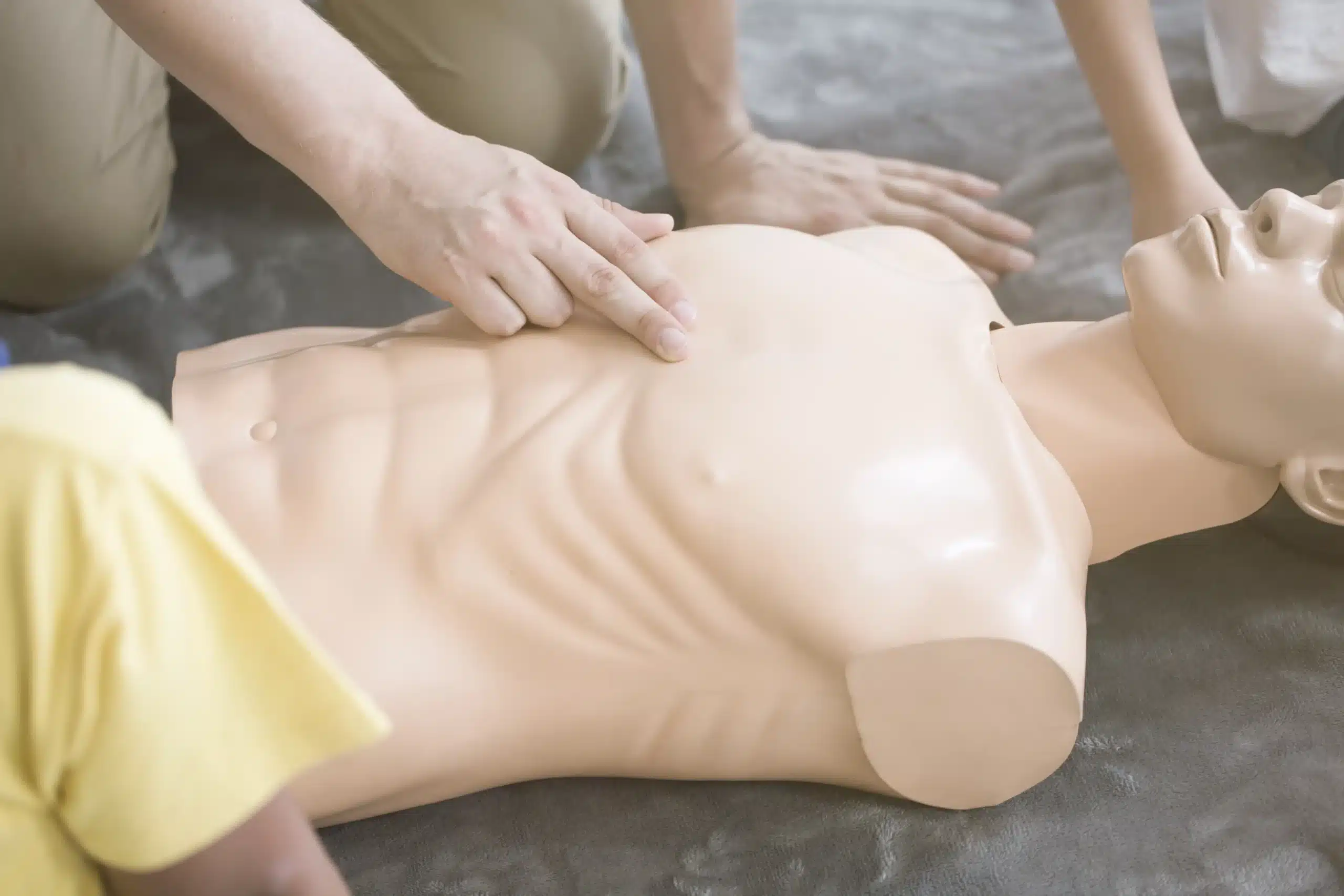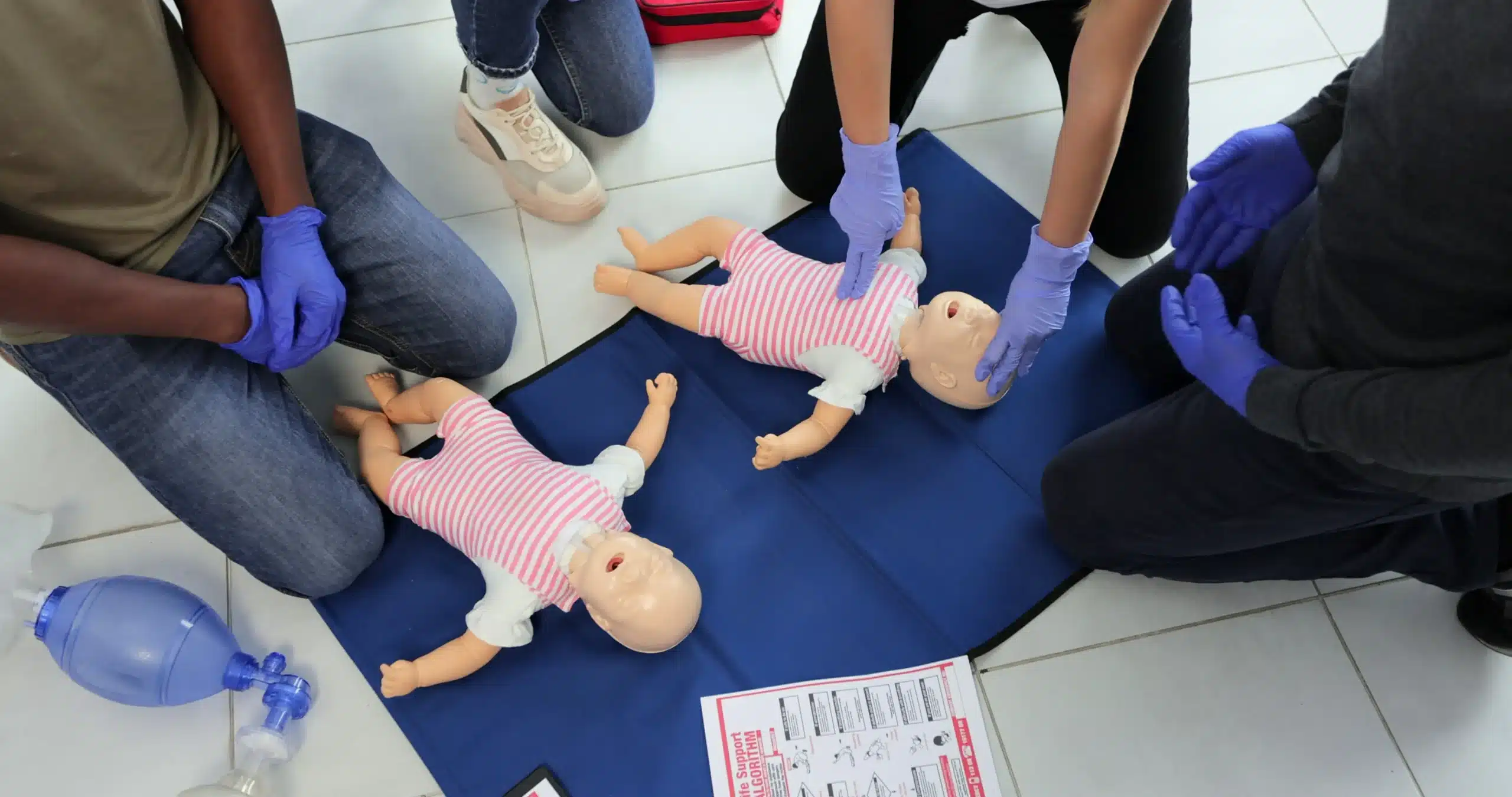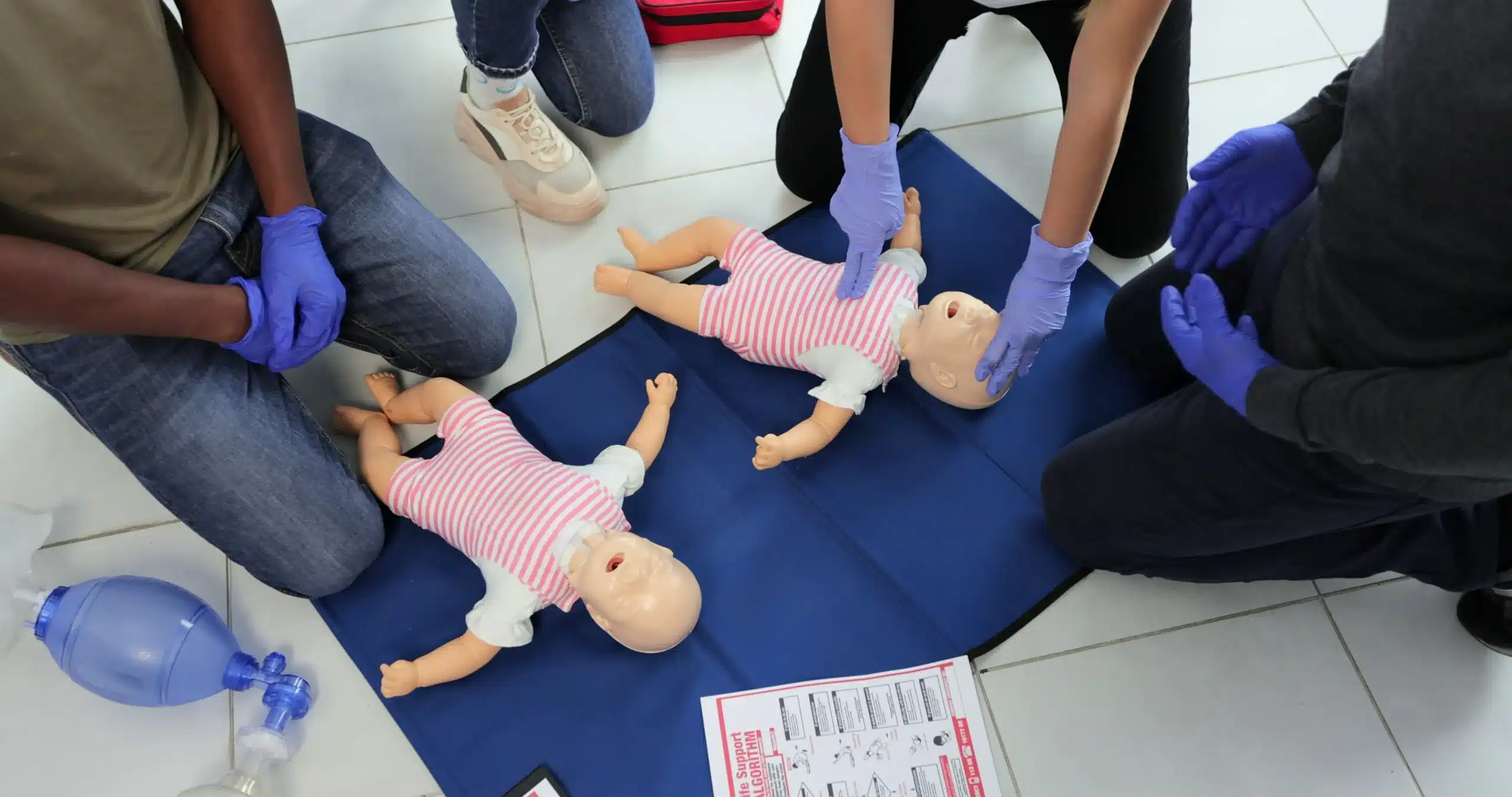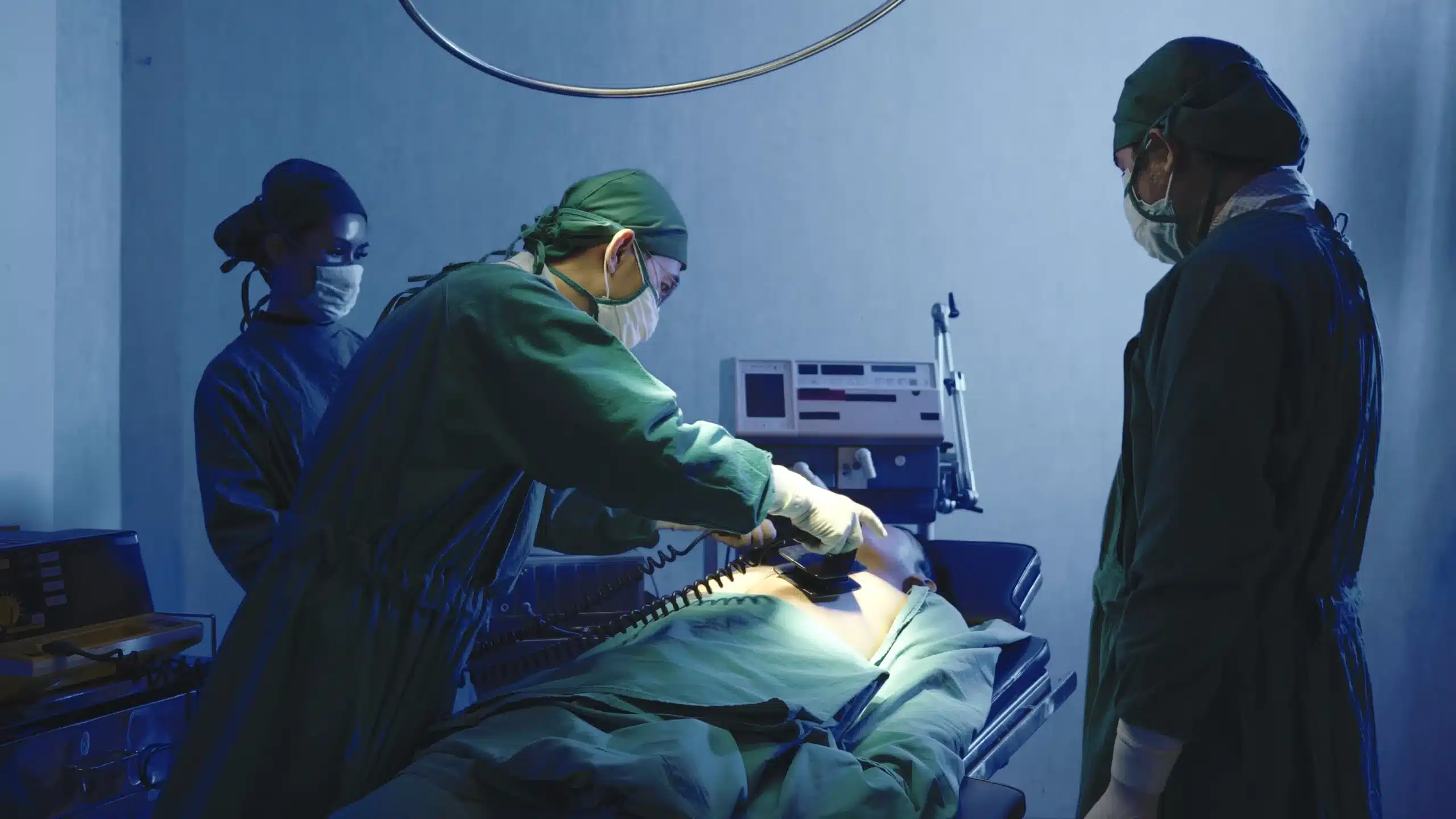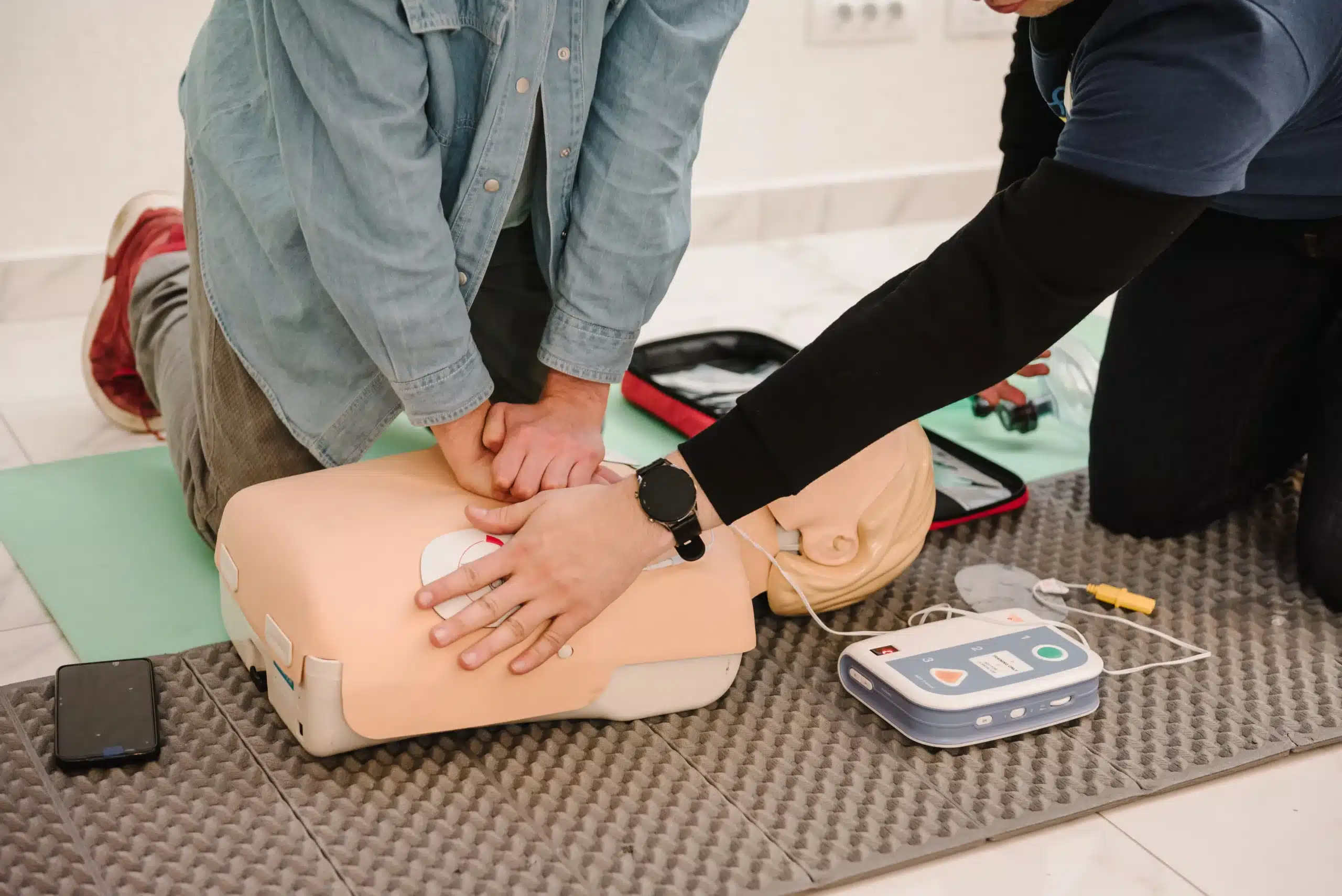Emergencies happen, and being prepared can save lives. First-aid training in Alameda provides you with the skills and confidence to respond effectively in critical situations. This guide covers everything you need to know about first-aid training in Alameda, from basic CPR to advanced life support. We’ll explore the different certification levels, course content, costs, and the benefits of becoming certified. Whether you’re a healthcare professional, a childcare provider, or simply someone who wants to be prepared, this guide will help you find the right first-aid training program in Alameda.
Key Takeaways
- First-aid training prepares you for the unexpected: Equipping yourself with these skills allows you to confidently respond to various medical situations, from minor injuries to life-threatening emergencies. Select a course that meets your specific needs and goals.
- Find a quality training provider: Seek out instructors with relevant certifications, practical experience, and a commitment to ongoing learning. Consider course content, cost, schedule, and location to find the best fit. Reviews and testimonials can offer valuable perspectives.
- Stay current with your skills: First-aid certifications require renewal, so understand the process and explore continuing education options. Regularly practicing and updating your knowledge ensures you remain prepared and effective in emergencies.
What is First-Aid Training in Alameda?
First-aid training in Alameda equips you with the skills to handle medical emergencies. These courses blend theory and hands-on practice, teaching you how to assess situations, perform CPR, and provide first aid for various injuries and illnesses. You’ll find a range of first-aid courses in Alameda, often aligned with guidelines from organizations like the American Heart Association. This ensures your training reflects current best practices. Safety Training Seminars, for example, offers several American Heart Association courses, including CPR, BLS, ACLS, and PALS. These courses underscore the importance of preparedness, whether at home or in a professional setting. For healthcare professionals seeking a streamlined certification process, the American Heart Association’s RQI program offers a modern approach to BLS, ACLS, and PALS certification. Ultimately, first-aid training empowers you with life-saving skills and contributes to a more prepared and responsive community.
First-Aid Courses Available
Safety Training Seminars offers a comprehensive range of courses designed to equip you with life-saving skills. Whether you’re a healthcare professional, a childcare provider, or simply someone who wants to be prepared for emergencies, we have a course for you. Our classes are held daily in Alameda, CA, at 2059 Clinton Ave, Suite 2F.
CPR Certification
CPR certification is a foundational course that teaches you how to perform cardiopulmonary resuscitation. This essential skill can help you save a life in the event of a cardiac arrest. Our CPR certification courses cover adult, child, and infant CPR techniques, giving you the confidence to respond effectively in various situations.
Basic Life Support (BLS)
For healthcare providers and other professionals who require a higher level of CPR training, our BLS certification is the perfect choice. We offer the American Heart Association’s Resuscitation Quality Improvement (RQI) program, a streamlined and efficient way to earn your BLS certification card. This program focuses on high-quality CPR skills and emphasizes continuous improvement in resuscitation techniques. The RQI program is a great option for busy professionals seeking flexible learning.
Advanced Cardiovascular Life Support (ACLS)
ACLS certification is designed for healthcare professionals who manage cardiopulmonary arrest and other cardiovascular emergencies. This advanced course builds upon the fundamentals of BLS and covers topics such as airway management, rhythm recognition, and pharmacological interventions. It’s a crucial certification for those working in critical care settings.
Pediatric Advanced Life Support (PALS)
PALS certification focuses on the specialized skills needed to respond to pediatric emergencies. This course is essential for healthcare providers who work with infants and children, providing them with the knowledge and confidence to manage respiratory distress, shock, and other critical situations. PALS certification ensures you’re prepared to handle the unique challenges of pediatric emergencies.
First Aid and AED Training
Our First Aid and AED training provides comprehensive instruction in basic first-aid techniques, including wound care, bleeding control, and managing fractures and sprains. We also cover the use of automated external defibrillators (AEDs), which can be crucial in the event of sudden cardiac arrest. Learning to use an AED can significantly improve the chances of survival.
EMSA Child Care Health & Safety
Specifically designed for childcare providers in California, our EMSA Child Care Health & Safety training meets the state’s regulatory requirements. This course covers a wide range of topics, including preventing childhood injuries, managing common illnesses, and administering medication. It provides childcare professionals with the skills and knowledge they need to create a safe and healthy environment for the children in their care. This training is essential for maintaining compliance with California childcare regulations.
Costs and Duration of First-Aid Courses
Knowing the cost and time commitment involved can help you plan for your first-aid training. Let’s break down what you can expect in terms of pricing, discounts, and course lengths.
Course Pricing and Discounts
First-aid course fees in Alameda are competitive. For example, Alameda CPR Classes offers a combined CPR and First Aid certification course for $140. This covers online instruction, in-person skills testing, and your certification card. Many providers also offer discounts for group bookings, so if you’re training with colleagues or friends, it’s worth inquiring.
Course Lengths
Most first-aid courses use a blended learning approach, combining online learning with a practical skills session. You can usually complete the online portion in one to two hours at your own pace. The in-person skills check is typically brief, around 20 minutes. This flexible format makes it easier to fit first-aid training into your schedule.
Low Price Guarantee
Safety Training Seminars offers a low price guarantee for their American Heart Association courses, making these essential life-saving skills accessible to everyone. With these affordable options, finding a course that fits your budget shouldn’t be a problem.
Instructor Qualifications and Experience
Knowing an instructor’s qualifications is key when choosing a first-aid course. It ensures you’re learning from someone with the right credentials and practical experience. Look for a program where instructors hold current certifications, like a First Aid at Work certificate, and ideally, a formal teaching qualification. This combination means they understand both first-aid practices and how to teach them effectively. At Safety Training Seminars, our instructors meet these rigorous standards, providing you with high-quality instruction.
Certification Requirements
First-aid instructors should meet specific certification standards. These certifications demonstrate their knowledge and skills are up-to-date with current guidelines. For example, instructors teaching CPR should hold a current CPR instructor certification from a recognized organization like the American Heart Association. This ensures they can teach the latest CPR techniques and protocols. Similarly, instructors teaching more advanced courses like ACLS or PALS should possess the relevant instructor certifications. Always check an instructor’s certifications to ensure they meet the necessary requirements. Our instructors at Safety Training Seminars maintain these certifications, giving you confidence in the quality of your training.
Instructor Backgrounds
Beyond certifications, an instructor’s practical experience is invaluable. Look for instructors with a background in healthcare or emergency medical services. Experience as a paramedic, nurse, or lifeguard often provides the hands-on experience needed to handle real-life emergencies. This practical knowledge can make their teaching more engaging and relevant. They can offer real-world examples and insights that go beyond textbook scenarios. Our team at Safety Training Seminars brings this valuable real-world experience to the classroom.
Ongoing Training and Development
The healthcare field is constantly evolving, with new guidelines and best practices emerging regularly. That’s why choosing first-aid instructors committed to ongoing training is essential. This dedication ensures their knowledge remains current. Look for instructors who participate in continuing education courses, attend industry conferences, and stay updated on the latest advancements in first aid and emergency care. At Safety Training Seminars, our instructors prioritize continuous learning to provide you with the most up-to-date and effective training.
Benefits of First-Aid Certification
Getting your first-aid certification offers several advantages, from personal preparedness to career advancement and community impact. Let’s explore some key benefits:
Prepare for Emergencies
Life is unpredictable. Accidents and medical emergencies can happen anytime, anywhere. First-aid certification equips you with the skills and confidence to respond effectively when needed. Whether it’s a minor cut or a more serious incident, you’ll be prepared to provide immediate assistance, potentially minimizing harm and even saving lives. These CPR and First-Aid certification courses teach valuable skills that empower you to make a real difference.
Advance Your Career
In many professions, first-aid certification is a valuable asset or even a requirement. Fields like healthcare, education, childcare, and fitness often prioritize candidates with these skills. A first-aid certification demonstrates your commitment to safety and your ability to handle critical situations, giving you a competitive edge and opening doors to new opportunities. Consider first-aid and CPR training to boost your resume and expand your skillset.
Improve Community Safety
First-aid certified individuals contribute to a safer community. By being prepared to respond to emergencies, you become a valuable resource for your neighbors, colleagues, and family. You can provide assistance at community events, during natural disasters, or simply in everyday situations where someone needs help. This widespread preparedness creates a more resilient and secure environment for everyone. First-aid training helps build a network of skilled responders within the community, improving overall safety and well-being.
First-Aid Training Providers in Alameda
Finding the right first-aid training provider is crucial for receiving quality instruction and obtaining a recognized certification. Here are a few options available in Alameda:
Safety Training Seminars
Safety Training Seminars, a woman-owned American Heart Association Training Center in Alameda, offers various AHA courses, including BLS, ACLS, PALS, CPR, and First Aid. They prioritize excellent customer service and affordability, boasting the lowest prices in Alameda County with same-day certification cards. They offer classes seven days a week, making scheduling convenient. You can explore their CPR and first-aid certification courses on their website. For those seeking childcare health and safety training, they also offer the EMSA Child Care Health & Safety course. Groups can take advantage of their discounted rates. Check out their low price guarantee. They also offer BLS, ACLS, PALS, and NRP courses.
Lifesavers CPR & First Aid
Lifesavers CPR & First Aid focuses on CPR and First Aid certification, along with AED equipment sales and program management. They also offer OSHA-approved online safety training. Serving the San Francisco Bay Area, they hold evening and Saturday classes at their Alameda office or on-site, catering to busy schedules. Learn more about their services on their website.
Alameda County Sheriff’s Office Regional Training Center
The Alameda County Sheriff’s Office Regional Training Center provides a comprehensive First Aid/CPR/AED course. This day-long course covers bloodborne pathogens, basic first aid, CPR, and AED use. Participants who successfully complete the course receive a two-year, nationally recognized certification.
American Red Cross
The American Red Cross offers a range of first aid and CPR courses, including instructor training. Their programs aim to equip individuals with the skills to handle emergencies effectively.
What to Expect in a First-Aid Course
Knowing what awaits you can help you feel prepared and confident going into your first-aid training. A typical course blends classroom learning with practical exercises, culminating in an assessment to ensure you’ve grasped the material.
Classroom Instruction
First-aid courses begin with instruction covering essential first-aid principles. You’ll learn to assess emergency situations, understand basic anatomy and physiology relevant to first aid, and recognize different types of injuries and illnesses. This foundational knowledge provides the framework for effective responses in various scenarios. Safety Training Seminars offers comprehensive CPR and first-aid certification courses in Alameda, blending theoretical knowledge with hands-on practical skills.
Hands-On Practice
Theory is only half the battle; practical application is crucial for mastering first-aid skills. Expect plenty of hands-on practice using mannequins and other training equipment. You’ll practice techniques like CPR, bandaging wounds, splinting fractures, and administering basic life support. This interactive component allows you to build muscle memory and gain confidence in your abilities.
Assessment and Certification Process
Once you’ve completed the classroom instruction and hands-on practice, you’ll undergo an assessment to evaluate your understanding and skills. This typically involves demonstrating the techniques you’ve learned on a mannequin or with a partner. Upon successful completion, you’ll receive your official American Heart Association certification card, valid for two years. The combined CPR and First Aid certification course at Alameda CPR Classes includes online instruction, in-person skills testing, and your certification card.
Choose the Right First-Aid Course
Picking the right first-aid course can feel overwhelming with so many options. But by breaking it down into a few key steps, you can find the perfect fit for your needs.
Assess Your Needs
Before you start browsing courses, think about why you want first-aid training. Are you required to have it for your job? Do you want to be prepared for emergencies at home? Or are you interested in volunteering in your community? Understanding your motivation will help you choose the right level of certification. For example, a basic first-aid course might be sufficient for parents or teachers, while healthcare professionals often require more advanced training. Define your goals first, then explore CPR and first-aid classes that align with those goals.
Match Courses to Career Goals
Some careers require specific certifications. For instance, if you’re pursuing a career in healthcare, you’ll likely need ACLS or PALS certification in addition to basic first-aid and CPR. If you work in childcare, the EMSA Child Care Health & Safety program might be necessary. Research the requirements for your desired profession or check with your employer to ensure you enroll in the appropriate course. Consider exploring the various courses offered by Safety Training Seminars to see what aligns with your career aspirations.
Consider Location and Schedule
Finally, think about logistics. Do you prefer in-person classes or online options? Where is the training center located? Safety Training Seminars offers courses throughout the week in Alameda, making it easier to find a time that accommodates your schedule. Consider factors like travel time, course duration, and weekend availability when making your decision. Finding a course that’s convenient and accessible will make it much easier to complete your training and earn your certification.
Maintain Your First-Aid Certification
Keeping your first-aid skills sharp is crucial for handling emergencies effectively. This section covers maintaining your certification and finding ongoing learning opportunities.
Renewal Requirements
First-aid certifications expire, so staying informed about renewal processes is essential. Requirements vary depending on the certifying organization and your location. For example, the American Heart Association offers specific guidelines for renewing their CPR and first-aid certifications. Always check with your local authorities, too. In Alameda County, the Emergency Medical Services (EMS) Agency provides resources and information on maintaining various certifications, including those for EMTs and paramedics. This ensures your qualifications remain current and you’re ready to assist when needed.
Continuing Education Opportunities
Even with a valid certification, ongoing education is key to staying proficient in first aid. Refresher courses and advanced training keep your skills sharp and introduce you to the latest procedures. The Community Child Care Council (4Cs) of Alameda County offers valuable in-person training for CPR, First Aid, and preventative health. National organizations like the American Red Cross also provide various courses to expand your knowledge and expertise. Taking advantage of these opportunities helps you remain confident and capable in providing assistance during emergencies.
Find the Best First-Aid Training in Alameda
Finding the right first-aid training in Alameda means doing a little research. It’s worth the time to find a course that fits your needs and learning style. Here’s how to get started:
Compare Course Offerings
First, think about which certifications you need. Safety Training Seminars offers a range of options, from CPR and First Aid to more advanced certifications like BLS, ACLS, and PALS. They also offer EMSA-approved childcare health and safety training. Having all these courses available in one place makes it easier to find what you need. Other providers, like Lifesavers CPR, also offer CPR and First Aid training. The Alameda County Sheriff’s Office Regional Training Center provides a comprehensive First Aid/CPR/AED course as well.
Read Reviews and Testimonials
Once you’ve identified a few options, check out online reviews. Sites like Yelp can offer helpful insights from past students. Reading reviews can give you a better understanding of the instructor’s teaching style and the overall course experience.
Make an Informed Decision
Choosing the right first-aid training is a personal decision. Consider what’s most important to you—the location, the cost, or the instructor’s experience. Also, think about your career goals. Some professions require specific certifications. Once you’ve weighed your options, you’ll be ready to enroll with confidence. Knowing you have these life-saving skills will benefit you and your community.
Related Articles
- CPR Training in Oakland: Your Guide to Certification – Alameda CPR Classes
- CPR Classes in Alameda: Your Complete Guide – Alameda CPR Classes
- BLS Training in Alameda: The Ultimate Guide – Alameda CPR Classes
- AHA ACLS Classes in Alameda, CA – Alameda CPR Classes
- CPR Certification in Alameda: Your Comprehensive Guide – Alameda CPR Classes
Frequently Asked Questions
What’s the difference between CPR and First Aid?
CPR focuses specifically on restoring breathing and circulation after cardiac arrest. First Aid covers a broader range of medical emergencies, from minor cuts and burns to more serious injuries like fractures and allergic reactions. Often, you’ll find these two taught together, giving you a well-rounded skillset for responding to various emergencies.
How long does it take to get First Aid certified?
Many courses now use a blended learning format. This means you’ll complete online coursework at your own pace, usually in a couple of hours, followed by a short in-person skills session, typically less than an hour. This flexible approach makes it easier to fit the training into your schedule.
How much does First Aid training cost in Alameda?
Costs vary, but you can expect to pay around $100-$150 for a combined CPR and First Aid certification course. Many providers offer discounts for group bookings, so check for those if you’re training with friends or colleagues. It’s always a good idea to compare prices and look for the best value.
How do I choose the right First Aid course?
Think about why you need the training. Is it for your job, personal preparedness, or community involvement? This will help you determine the right level of certification. Also, consider the course format (online vs. in-person), location, schedule, and the instructor’s experience. Reading reviews from previous students can also give you valuable insights.
How often do I need to renew my First Aid certification?
Most First Aid certifications are valid for two years. Check with your certifying organization or local authorities for specific renewal requirements. Even if your certification is still valid, consider taking refresher courses periodically to keep your skills current and your confidence high.


